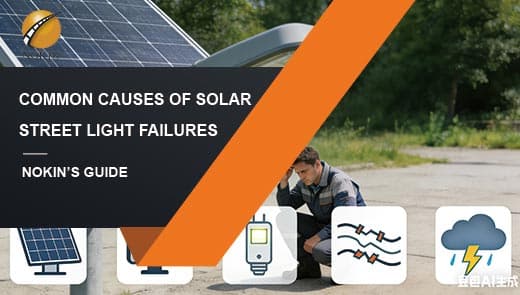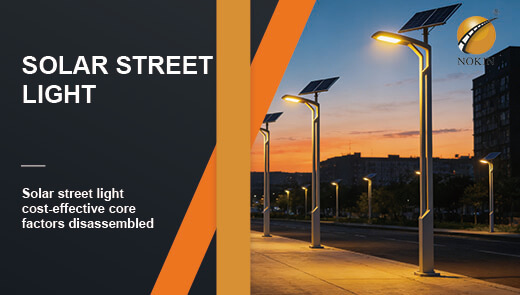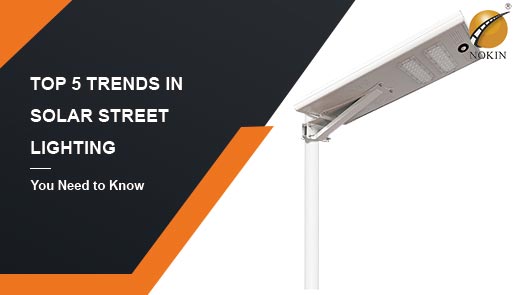What is the Normal Height of a Street Light Pole?
As an important part of urban infrastructure, the height of a street light pole may seem simple, but it is closely related to people's daily life and urban construction. The right height for the road, community, commercial areas and other places to provide good lighting, to protect the safety of travel, enhance the comfort of the environment. So, what is the conventional height of street light pole? In this article, we will explain this question in detail from the importance of street light pole height, street light type, standard height, factors affecting the choice of different scenarios.
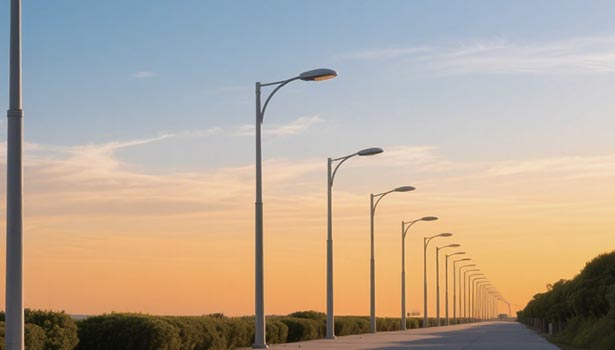
Importance of Light Pole Height
The height of street light poles directly determines the lighting effect, which affects the spread of light and the degree of even distribution in a particular area. If the pole is too short, it may not provide sufficient illumination, resulting in dark areas and safety hazards for pedestrians and vehicles; on the other hand, a pole that is too tall may produce glare and uneven illumination, which can also affect visibility.
Moreover, the height of street light poles must be considered in conjunction with the surrounding buildings and trees. Choosing the right height ensures that the light is not blocked and that the lighting efficiency is maximized. For example, in residential areas, lower light poles are more likely to create a cozy atmosphere; while in commercial areas, higher light poles are often used to cover a wider space. The interaction between the height of street light poles and their surroundings is crucial, not only in terms of visibility, but also in terms of its contribution to the overall urban design, shaping the way spaces are perceived and used by the public.
Types of Street Light
To determine the height of a street light pole, it is first necessary to understand the different types of street lights. Street lights can be divided according to light source and location of use. According to light source, there are LED street lights, induction lights, energy-saving lamps, high-pressure sodium lamps and metal halide lamps. According to the use of location, including ordinary street lamps, high street lamps, garden street lamps and landscape street lamps.
The function of the street light also determines the choice of its type. If the main purpose is lighting, street lights with a height of more than 5 meters are usually used; if used for landscape decoration, garden lights with a height of about 3 meters are more suitable.
Standard Heights of Street Light Poles
Standard heights of street light poles usually range from 2.4 m to 15 m (28 ft. to 50 ft.), depending on the width of the road. When lighting one side of a roadway, the pole height should be the width of the roadway or less than 1 meter narrower than the width of the roadway.
There is a relationship between the wattage of common LED street lights and the height of the pole: 100W LED street lights have a pole height of 15 feet or less; 150W LED street lights have a pole height of 22 feet or less; 200W LED street lights have a pole height of 28 feet or less; and 300W LED street lights have a pole height of 35 feet or less. Height ranges also vary by type of street light: garden lights are typically 3-4 meters high; high mast lights (also known as high mast lights) are over 15 meters high.
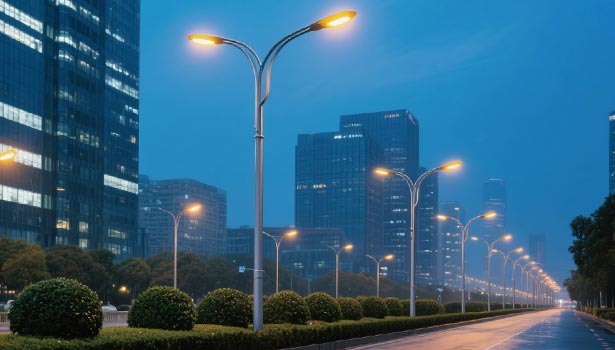
Factors Influencing the Height of Street Light Poles
Environmental Considerations
The height of street light poles can be influenced by a variety of environmental factors. In areas prone to strong winds or extreme weather conditions, not only do they need to be taller, but they also need to have a more stable foundation structure, which is enhanced by increasing the diameter and wall thickness of the pole to ensure stability and prevent collapse under adverse conditions such as typhoons and heavy rainfall.
In addition, trees or other obstacles in the area, in addition to choosing a higher pole, but also need to be combined with the lamps and lanterns of the elevation angle adjustment design, to avoid branches and leaves blocking the light, while taking into account the plant growth space reserved to ensure that the long-term lighting effect is not affected by the natural growth factors.
Location-Specific Factors
The location where a street light pole is installed will also have an impact on its height. In urban environments, dense building clusters and wide road networks require street light poles to have stronger lighting coverage, and higher poles can reduce the number of lamps and lanterns, lower installation costs, and at the same time form a coordinated spatial proportion with tall buildings.
In rural areas, due to low buildings and narrow roads, lower light poles can meet basic lighting needs and avoid visual conflicts with the open field landscape. The design needs to combine satellite maps and field mapping, so that the height of the light poles and the surrounding building skyline, road red line, etc. to form a harmonious transition, taking into account the functionality and aesthetics.
Road Type and Usage
Different road types and their usage patterns will affect the height of street light poles. Highways and major arterial roads have high traffic volume and high speed, which require higher poles with large-angle light fixtures to form a continuous illumination belt to ensure that drivers can clearly identify the road conditions and signs at high speeds, and the illumination scope needs to cover the emergency lanes and roadside areas.
Residential roads are characterized by low-speed traffic and pedestrian activities. Shorter light poles can reduce light pollution and create soft light through diffuse reflective luminaires, while avoiding direct light on residents' windows, balancing lighting safety and living comfort.
Lighting Design Standards and Regulations
Lighting design standards and regulations developed by municipalities or related organizations play a key role in determining the height of street light poles. These standards specify parameters such as average illuminance, luminance uniformity, and glare limit values for different areas, for example, a glare value of 15 or less around schools, and an average ground level illuminance of no less than 20 lux in commercial areas.
At the same time, energy efficiency standards require that the height of the light pole and the power of the lamps and lanterns to match, to avoid “high poles and low power” resulting in inadequate lighting or “short poles and high power” resulting in energy waste. A preconstruction lighting simulation report is required to ensure that the pole height meets local code requirements and is approved before installation.
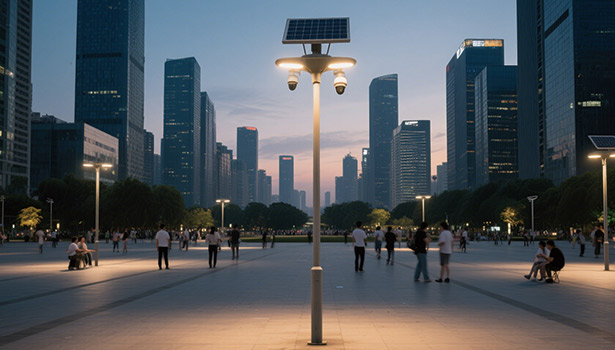
Choosing the Right Light Pole Height
Functional and aesthetic requirements must be considered when choosing the height of a street light pole to ensure optimal lighting of the target area.
Considerations for Residential Areas
In residential areas, lower street light poles (typically between 10 and 15 feet) create a warm and pleasant ambiance, they provide ample light while reducing glare on homes and yards, and shorter poles are less intrusive in terms of natural landscaping and community aesthetics. street light installers should consult with community residents to understand their preferences and ensure that the lighting meets the character and safety needs of the community, and that soft lighting enhances social interaction and safety without unduly impacting the residential environment.
Lighting Needs for Commercial Spaces
Commercial areas often require brighter, wider coverage lighting solutions. In locations such as parking lots and shopping centers, taller poles of 15 to 30 feet are more commonly used to ensure good visibility in larger open spaces, which helps to cover large areas without the need for excessive fixtures and is good for energy efficiency. This height helps to cover a wide area without the need for too many fixtures, and is conducive to energy efficiency.
In addition, security is an important concern in commercial environments. Adequate lighting can deter criminal activity while keeping customers safe and comfortable, and businesses must consider pedestrian and vehicular traffic when developing a lighting plan.
Special Considerations for Public Spaces
Public spaces such as parks, sports facilities and transportation hubs require more thoughtful consideration in the selection of street light pole heights for areas that need to accommodate a variety of activities while ensuring safety and visibility. For example, parks can use street light poles of various heights to create a layered lighting effect that enhances ease of use at night while maintaining the ambience of the natural environment; conversely, transportation hubs need to provide uniform lighting over a wide area to ensure safety and movement of people.
The conventional height of street light poles is not fixed, and the standard range is between 2.4 m and 15 m. The exact height is affected by a number of factors, such as the environment, location, type of road, and lighting standards. In different scenarios, it is important to choose the right height of street light pole. Choosing the right height of street light poles not only ensures the functionality and safety of lighting, but also enhances the aesthetics of the environment.

